Antique lace and embroideries are my favorite things in the whole world, after grandchildren and chocolate. I love the fine workmanship, the intricacy of patterns, the elegant combinations of laces and embroidery.
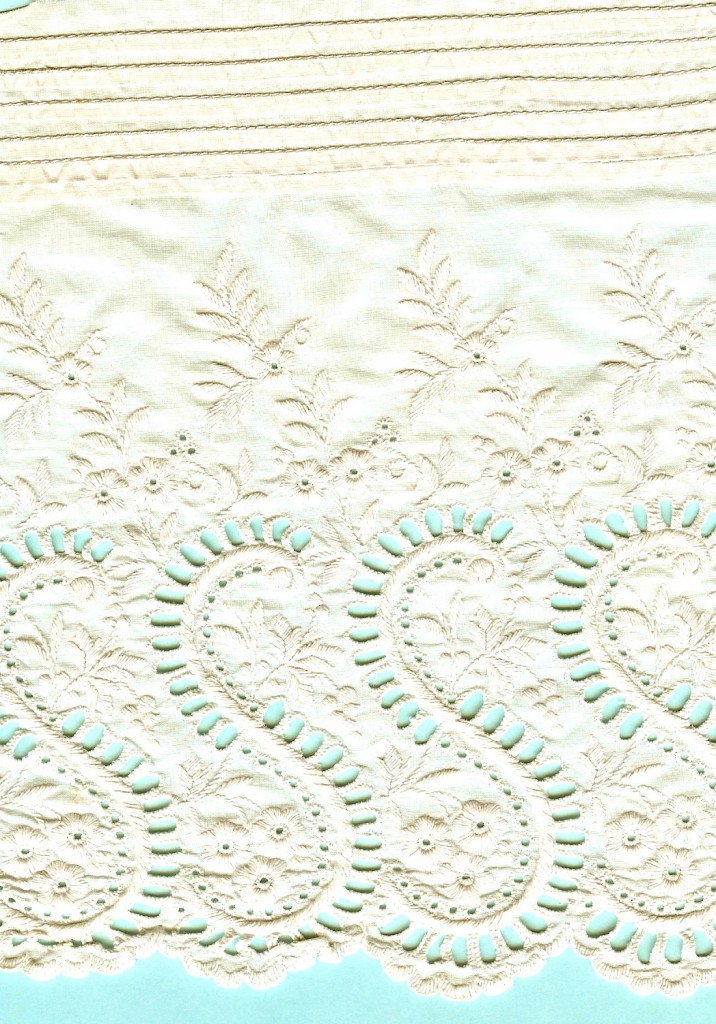
This is part of a 90" petticoat hemline. Surely it must have been allowed to peek out from under a skirt. This is an exquisite trim, further embellished with 6 tiny tucks above the edge.
Actually, I love everything about them.   So this lacy sort of crazy patch quilting is a natural outlet for my appreciation and use of the materials.
An earlier post addressed the quilt shown at the left,  In the Pink, so I won’t go into details about it. But since one of the classes I will be teaching at Sewing at the Beach, in Myrtle Beach, SC, is titled Lace Crazy Patch, I wanted to share with you photos of some of the lovely textiles that will be included in the student kits.
Today’s laces are beautiful, no doubt. But I think back to comments made some time ago by Joyce Oakley, who at that time had been vice president of Capitol Imports for several years. She explained that the number of background patterns in a lace contribute mightily to the cost. In today’s market, the lace becomes so expensive that it is almost impossible to generate enough sales to offset the cost of making the elaborate laces of yesteryear.Â
For as many years as I have been sewing, I have collected heirloom laces and textiles. Many are pieces/parts of antique garments,  like the  6″ Swiss edge from a vintage petticoat.
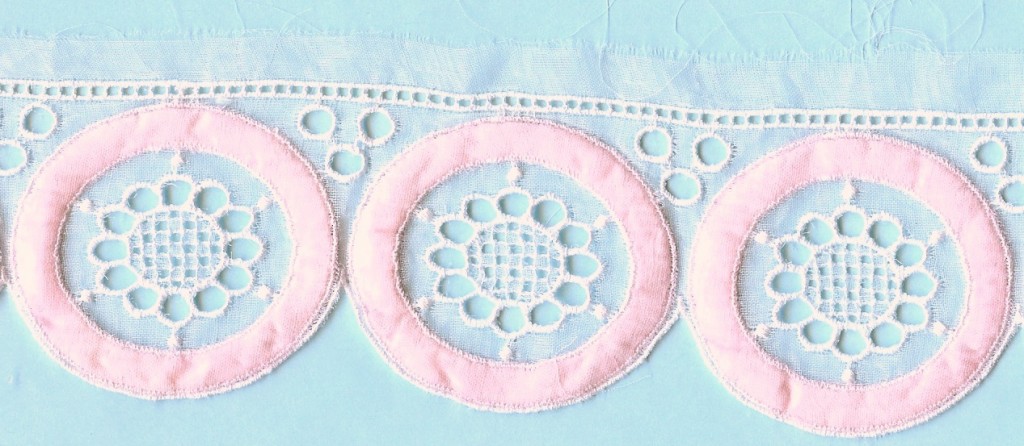
Others, such as the pink satin rings, are yardage that was for sale to the home sewist. This piece is so unusual. In today’s market, I have never seen an edge that combined all these features: colored embroidery covered with organdy, eyelets, fil tire’ and entredeux.
Coronation cord was very popular in the first quarter of the previous century. Readily available in a variety of colors and sizes, the cord was simply couched in place for household items as well as clothing. Antique magazines offer ads for its purchase and projects for its use. I wish we could purchase this product now. I have lots of ideas.
Fine crochet laces were created at home by the proverbial everyday housewives. One of the finest and most popular was Irish crochet.  Fine lawn blouses sported cuffs and collars while household linens also were heavily embellished with Irish crochet.  Because it is a dense, tight lace, it has outlived most of the items which featured it.
Tatting has never been as popular as it was in the early 1900′s. As with most forms of needlework, it’s popularity popularity spawned creative interpretations. This center of this piece, the small squares separated bybars, is, I think, a staple of Battenburg lace. It just doesn’t look like a Battenburg component to me, but this characterization of its origins was reported to me by a relatively credible source. So perhaps it is, or isn’t.
One of the loveliest pieces included in some of the kits is a piece of very, very fine Swiss embroidery on very sheer batiste, circa 1920’s. As if the embroidery were not enough, it is then trimmed with 1 1/4″ edging. Even the tiny granito styled dots are delicate. This is so representative of the delicate, airy styles of the day. The fabric and the embroidery are both so very fine. The embroidery thread must be at least 80 wt., perhaps even finer.
Examining the extraordinary textiles in my stash has given me untold infusions of inspiration.  But the time has come to reduce my special treasures to a manageable size. As you look at these antique pieces, I hope you, too, will be inspired and perhaps learn something of the heirloom goods that were in use when heirloom sewing was simply fine sewing.
Handling all these beautiful pieces has compelled me to plan another quilt like In the Pink.


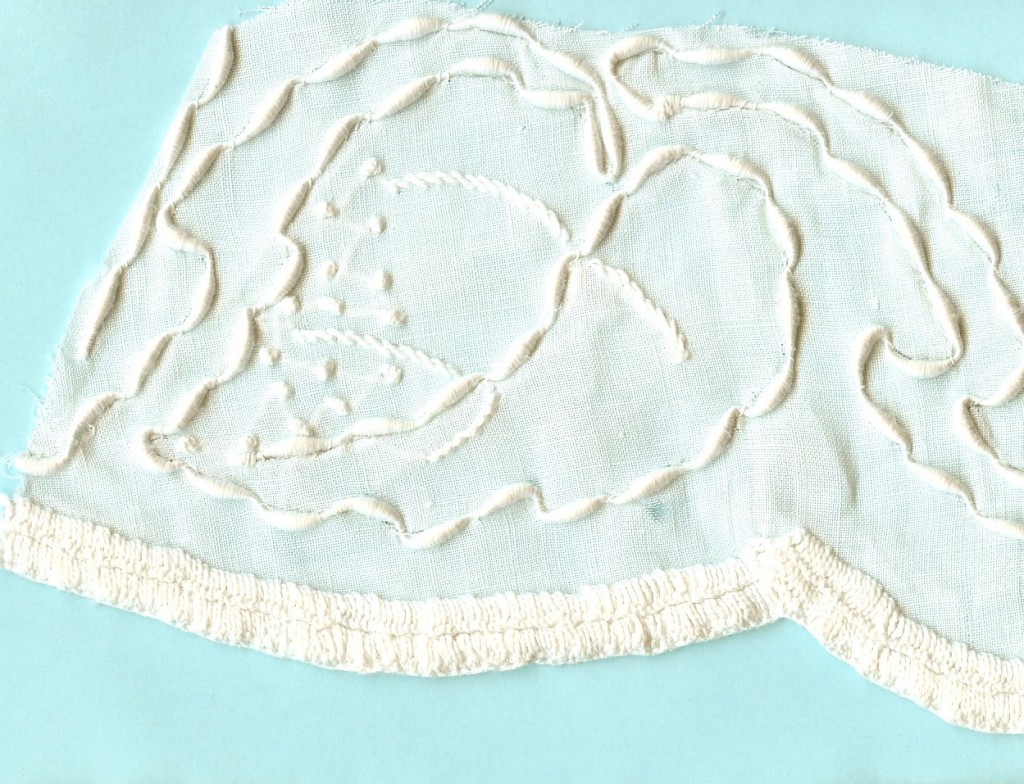

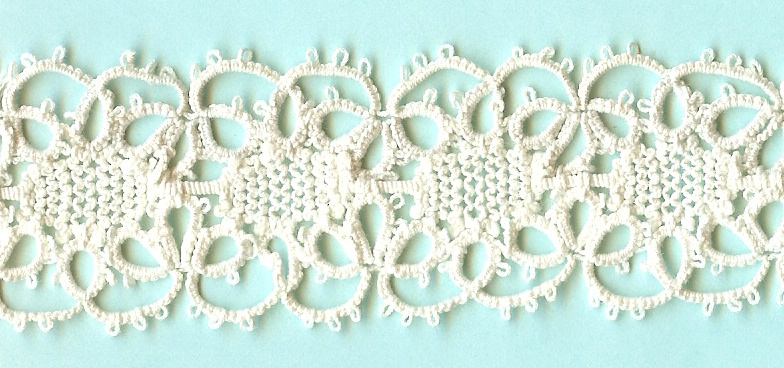
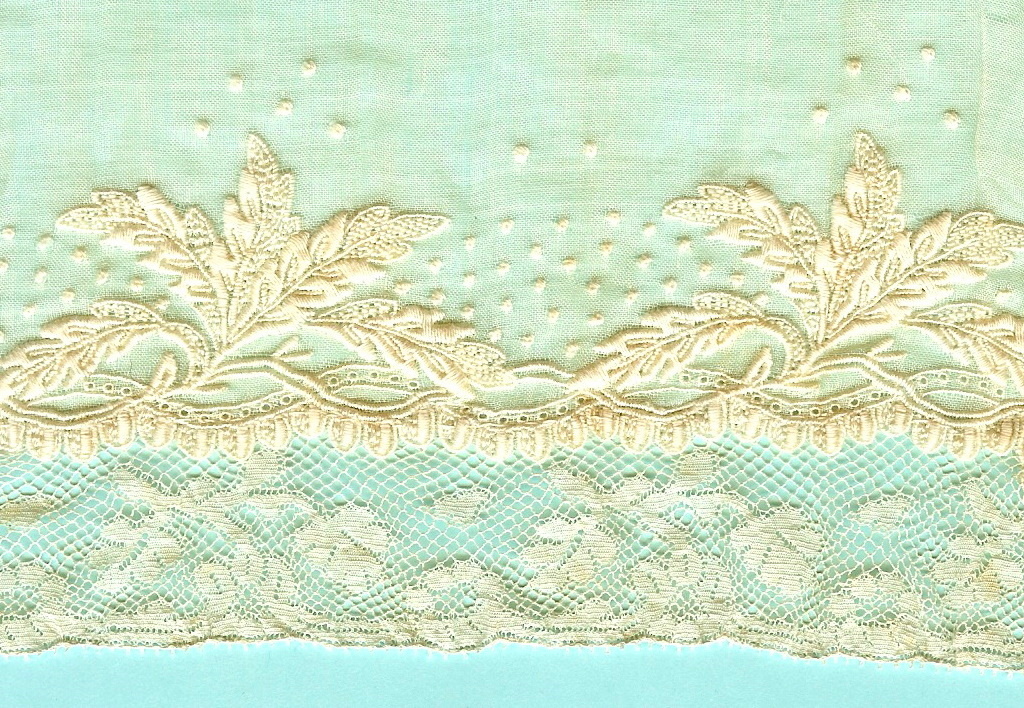
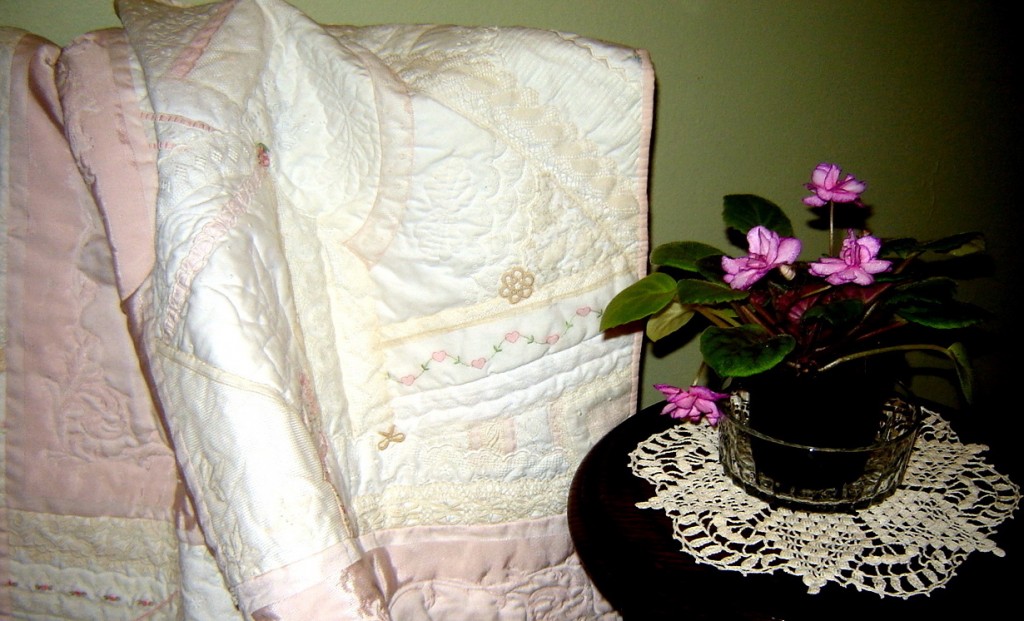

3 responses to “Lacy Crazy Patch”